Trek has removed the Émonda with the eighth-generation Madone, combining its lightweight climbing bike and dedicated aero platform to create what the brand claims is a “revolutionary” all-around road racing bike.
“A fusion of its fastest road racing bikes,” the new Madone aims to be as aerodynamic as the outgoing seventh-generation Madone and as light as the Émonda.
Trek introduced its new top-of-the-line OCLV 900 layup with the new Madone. Using new manufacturing techniques, it is said to be up to 20% stronger than the outgoing 800 Series layup and lighter. This and a new one-piece fork save 320g compared to the seventh generation Madone.
The Émonda name will live on as the Émonda ALR alloy race bike, but will no longer feature in Trek’s premium road bike lineup.
Foil System Foil is the future
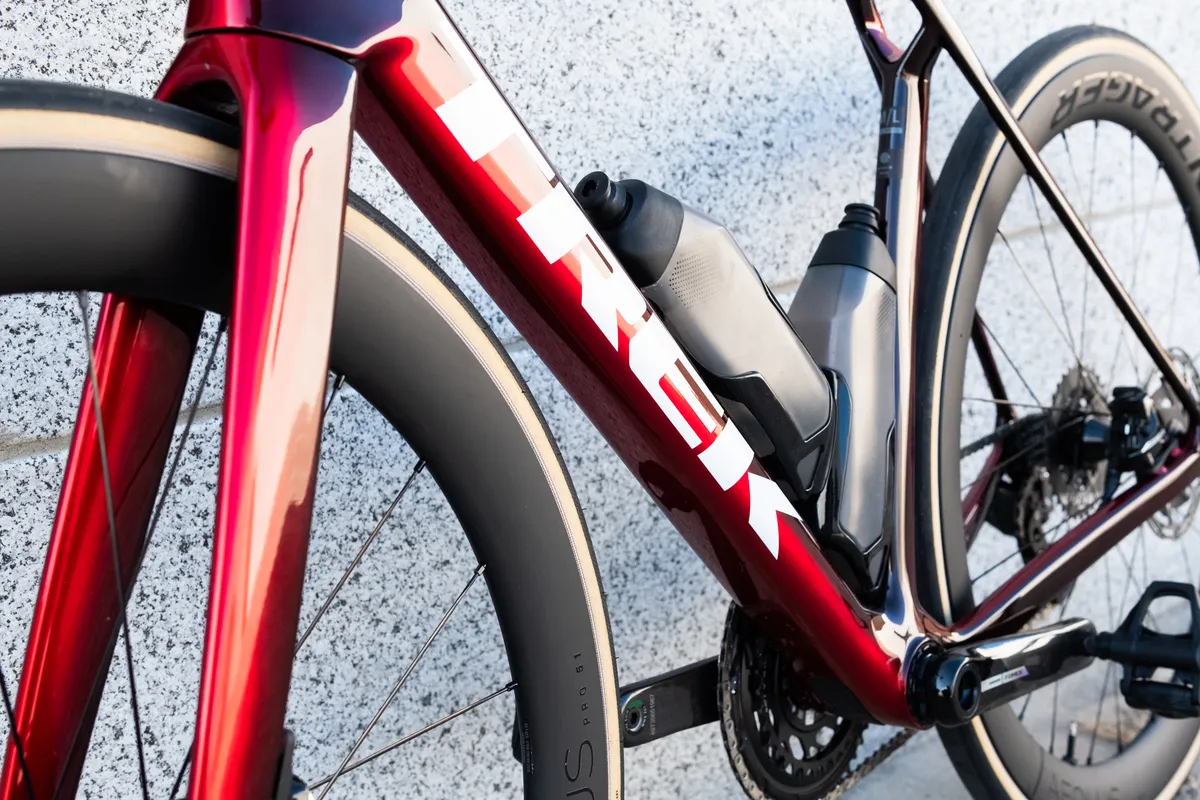
Trek has developed a series of tube shapes for the new Madone, abandoning its long-standing Kammtail shapes in favor of what it calls Full System Foil.
Compared to the outgoing Madone, most of the tubes are wider and stubbier. Trek claims they are structurally more efficient (lighter) than the Kammtail tubes.

Trek says the bike is designed to optimize airflow across the entire bike and rider, rather than optimizing individual areas of the bike.
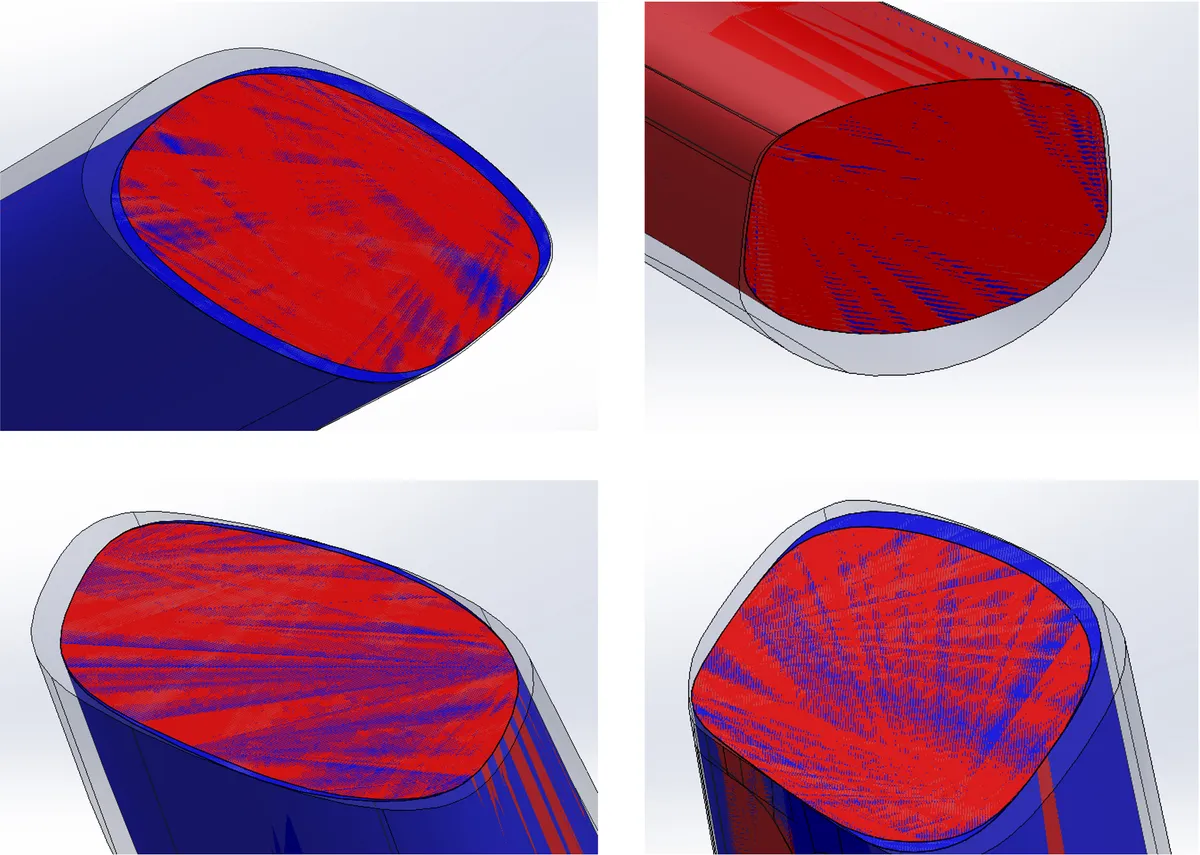
The XS and S size bikes feature thinner tubes than the larger size bikes. Trek says this reduces the weight of the smaller bikes and maintains consistent aerodynamic performance across the size range.
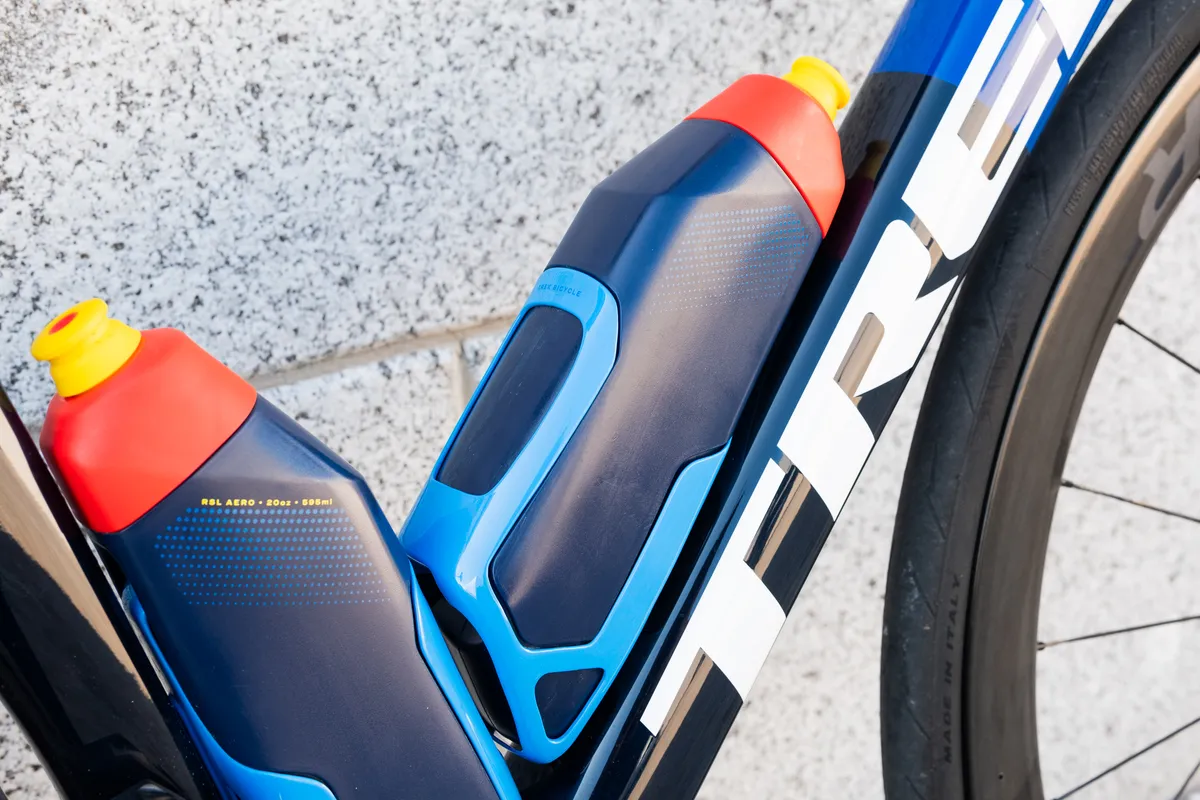
Trek has developed new aerodynamic bottles and matching cages for the Madone.
Trek claims these bottle cages save 3.7 watts at 45 mph compared to a standard round bottle of the same capacity, and are faster than using no bottle at all. The bottle cages work with classic round bottles.
The new bottles come stock with SLR level bikes and are available on the aftermarket.
Compared to a previous-generation Madone with round bottles and a largely comparable construction, the new Madone with aerodynamic bottles is said to be 0.1 watts faster to 35.4 km/h – or, in other words, about the same.
As expected, the difference is more marked when comparing the new Madone to the Émonda, with a claimed saving of 11.3 watts at the same speed.
New layup reduces weight
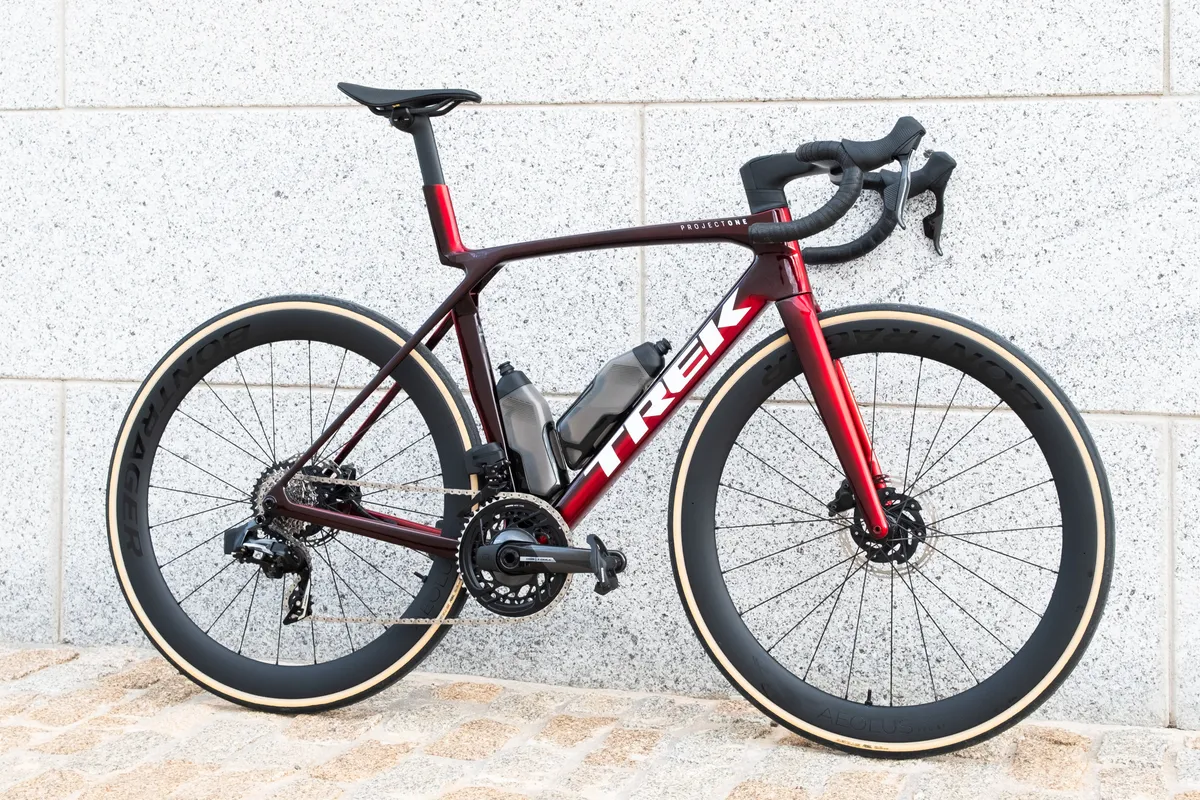
Trek’s new 900 OCLV layup technology, used on SLR-level bikes, uses an inflatable mandrel – the form around which the frame is laid – during manufacturing.
This improves compaction, removing excess resin and reducing wrinkles inside the tubes.
With this new manufacturing technique, a painted SLR level M/L size frame would weigh 796g and the fork 350g.
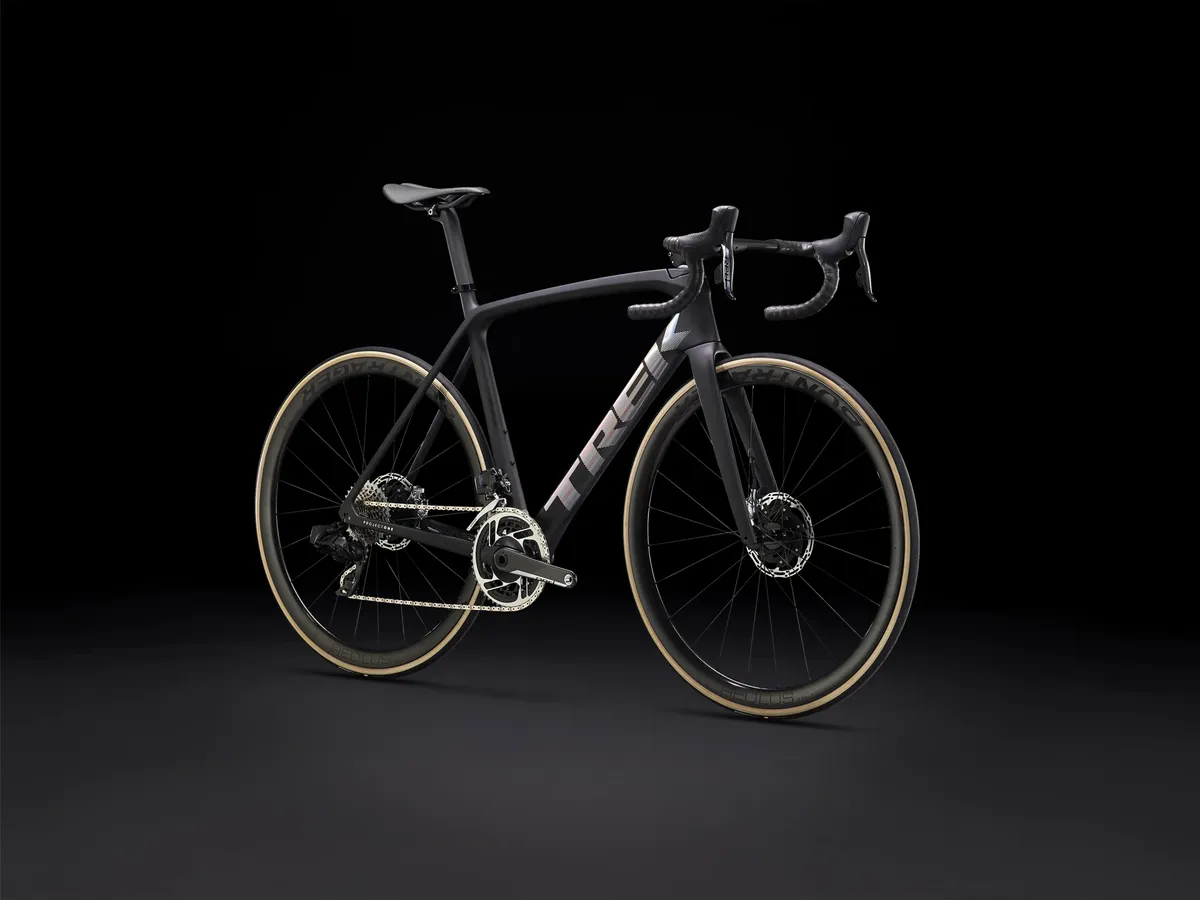
That’s a saving of 320g over the seventh-generation Madone, but it’s a bit heavier than a top-of-the-line Émonda OCLV 800 SLR frame of the same size (claimed 698g).
Comparing similar complete configurations equipped with Red AXS, the new Madone SLR 9 AXS would weigh 7.00 kg and the previous Émonda SLR 9 AXS 6.75 kg.
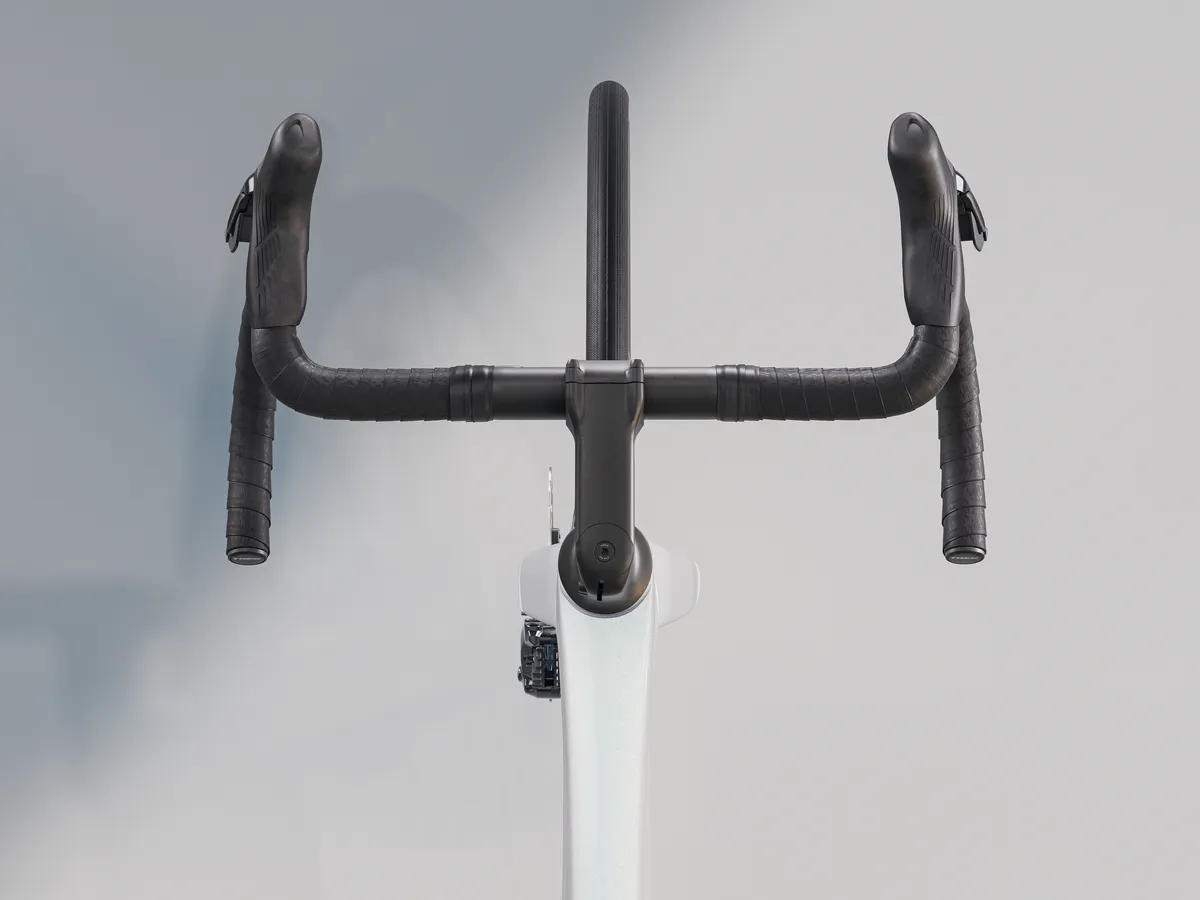
The SL-level Madone uses Trek’s OCLV 500 layup. The declared weight is 1,054 g for the frame and 363 g for the fork.
The higher-end SLR bikes also feature the new one-piece Aero RSL cockpit, while the SL has the conventional two-piece cockpit.
The SL is also compatible with mechanical transmissions.
IsoFlow remains
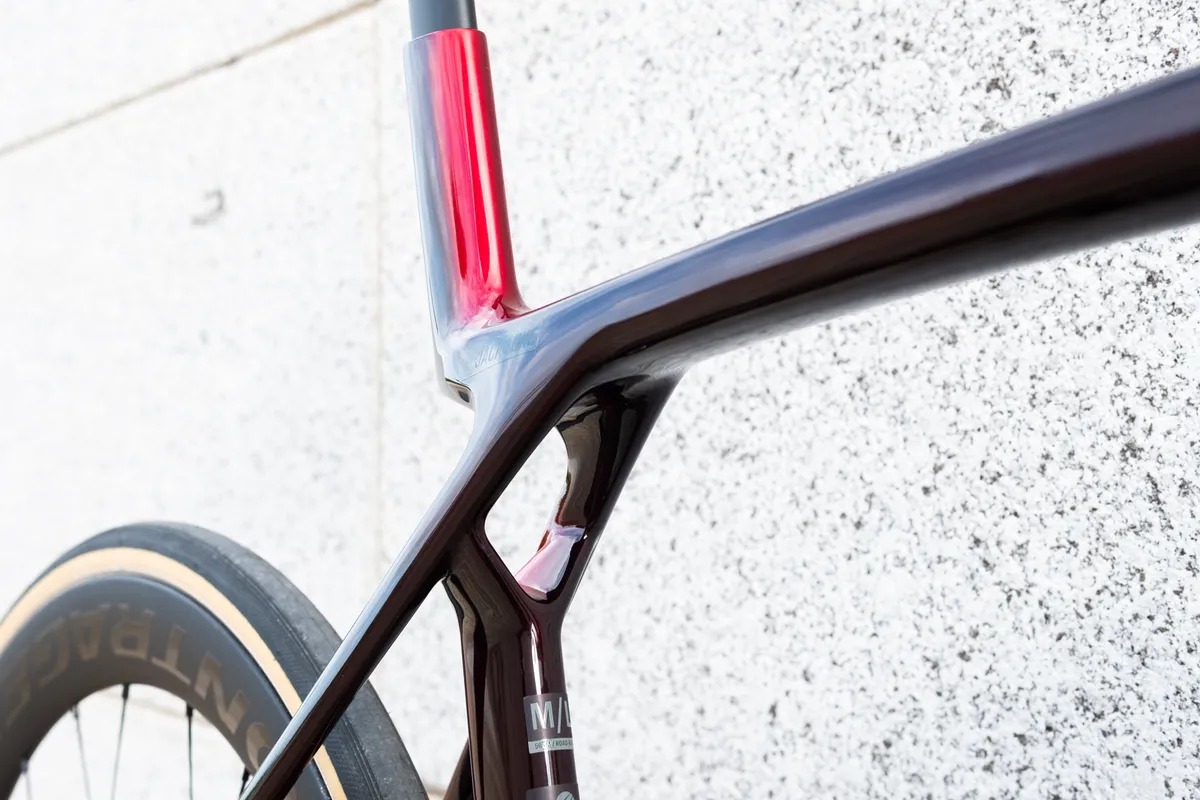
Introduced on the seventh-generation Madone, Trek has retained its signature IsoFlow system for the bike.
This hole in the seat tube allows the seat mast to flex and is supposed to improve aerodynamic performance.
The second incarnation of IsoFlow has been slightly refined and the aerodynamic shape refined to reduce weight and improve performance.
This, combined with new layering techniques – which allowed Trek to remove the foam core used on the original incarnation of IsoFlow – is said to improve vertical compliance by 80%.
Reduced size range covers more riders
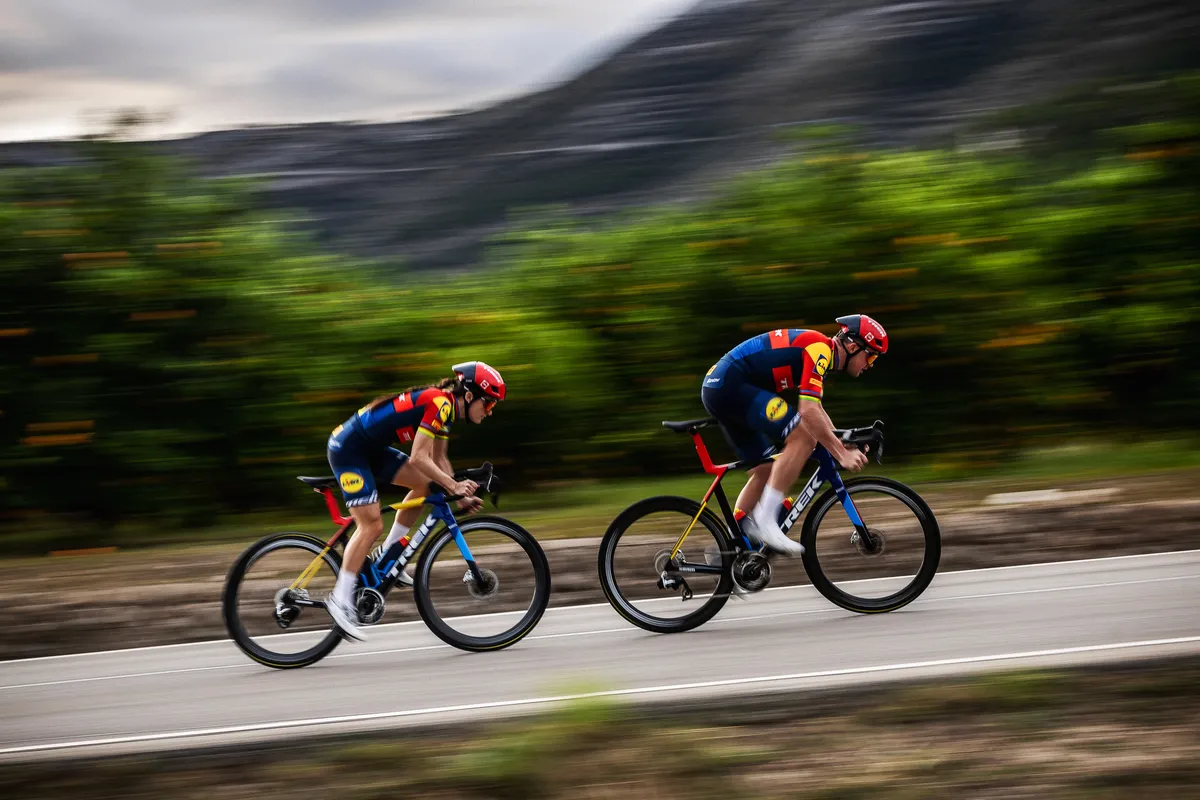
The Madone size range has been reduced from eight to six sizes. Trek says this new line covers a wider range of riders with less overlap between sizes.
Trek has also removed numerical sizes in favor of T-shirt-style sizes.
The sizes 54 and 52 cm have been combined in the new size M bike. The previous 62 cm bike is now covered by the size XL bike, which has an extended seat mast.
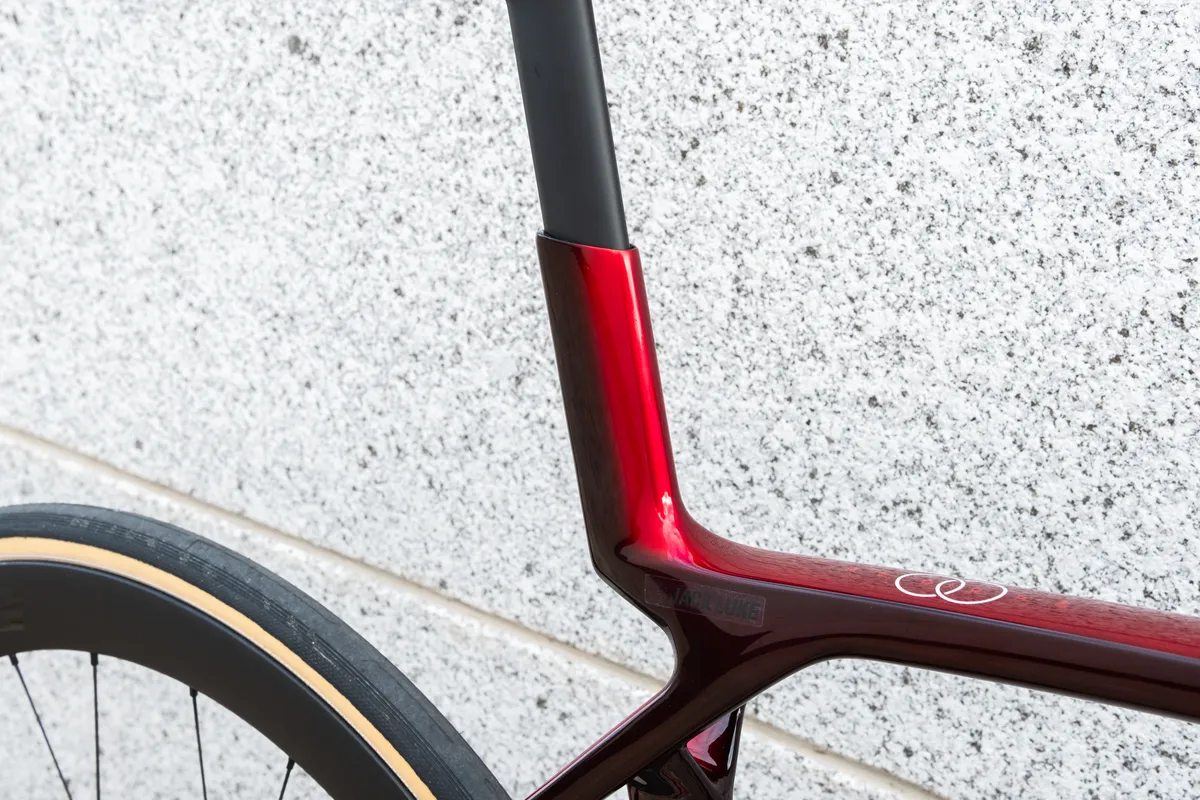
On the other end, Trek says, increased seatmast adjustment expands the size range to even smaller riders.
Trek previously offered its bikes in H1 (pro/aggressive) and H2 (comfort/endurance) fit options.
This distinction was removed with the 2021 Trek Émonda, introducing its versatile H1.5 fit.
With the new Madone, Trek has completely abandoned its “H” naming conventions, now describing its versatile geometry as “Road Race.”
The geometry of the seventh and eighth generation Madones is similar: the reach is slightly reduced in most sizes and the stack increased, but only by a few millimeters in both cases.
New Trek Madone geometry chart
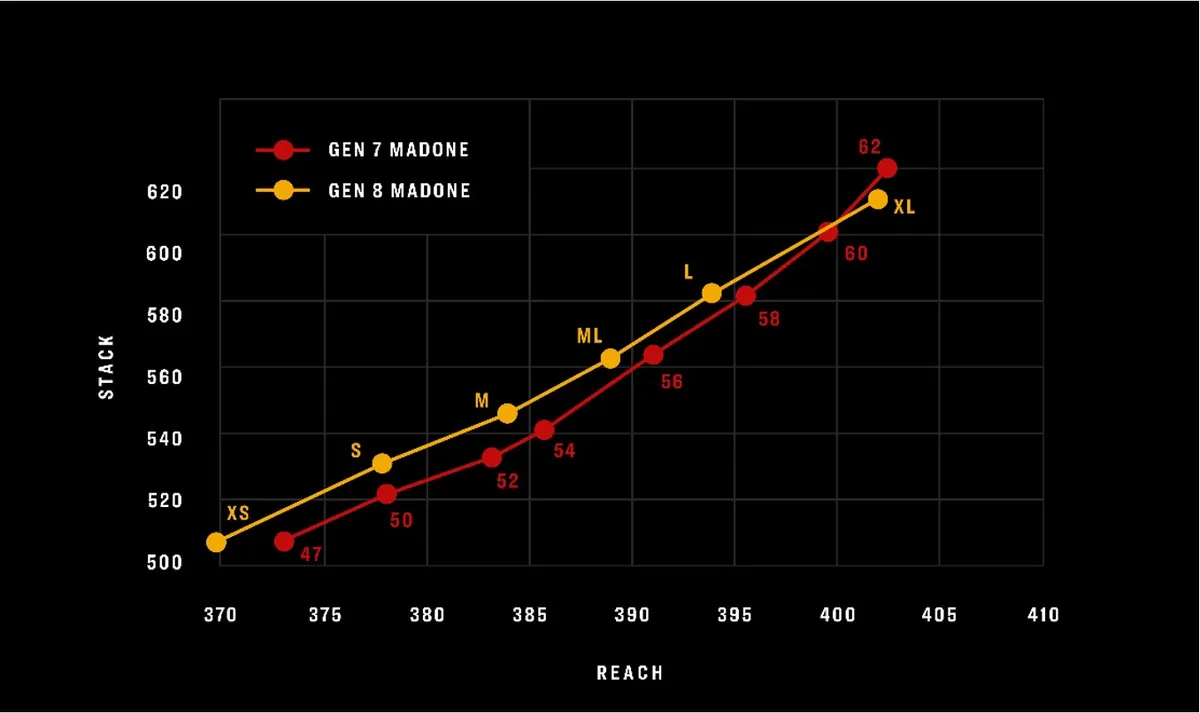
A slower cockpit?
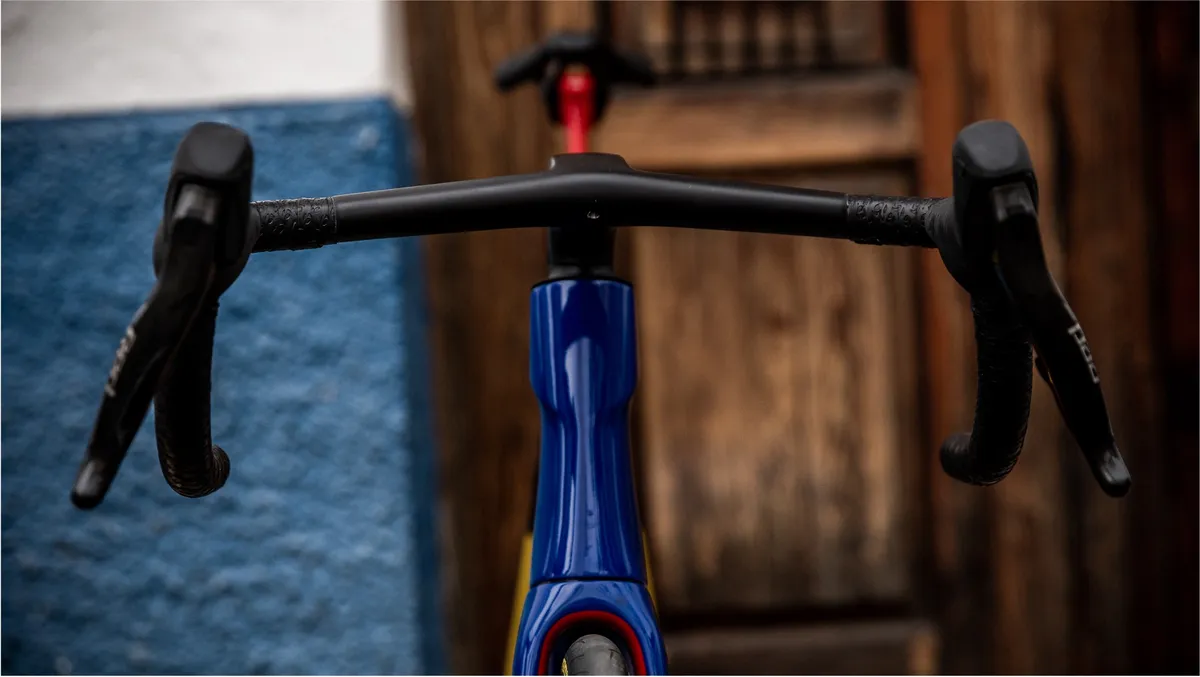
Trek claims its updated RSL Aero cockpit is less aerodynamic than the seventh-generation Madone cockpit. However, the way it interacts with the rider’s legs results in a more aerodynamic system overall.
The original cockpits are 41 cm wide at the cowls and widen to 44 cm at the companionways.
Although not based on percentage of sales, Trek says the majority of Madone SLR orders are made through its Project One program.
This offers full customization options, including paint, band choice and, most importantly, touchpoints.
Trek claims this helps avoid common pitfalls of one-piece cockpits, with the majority of consumers choosing theirs accordingly.
UDH, Universal Helmet Parts and T47
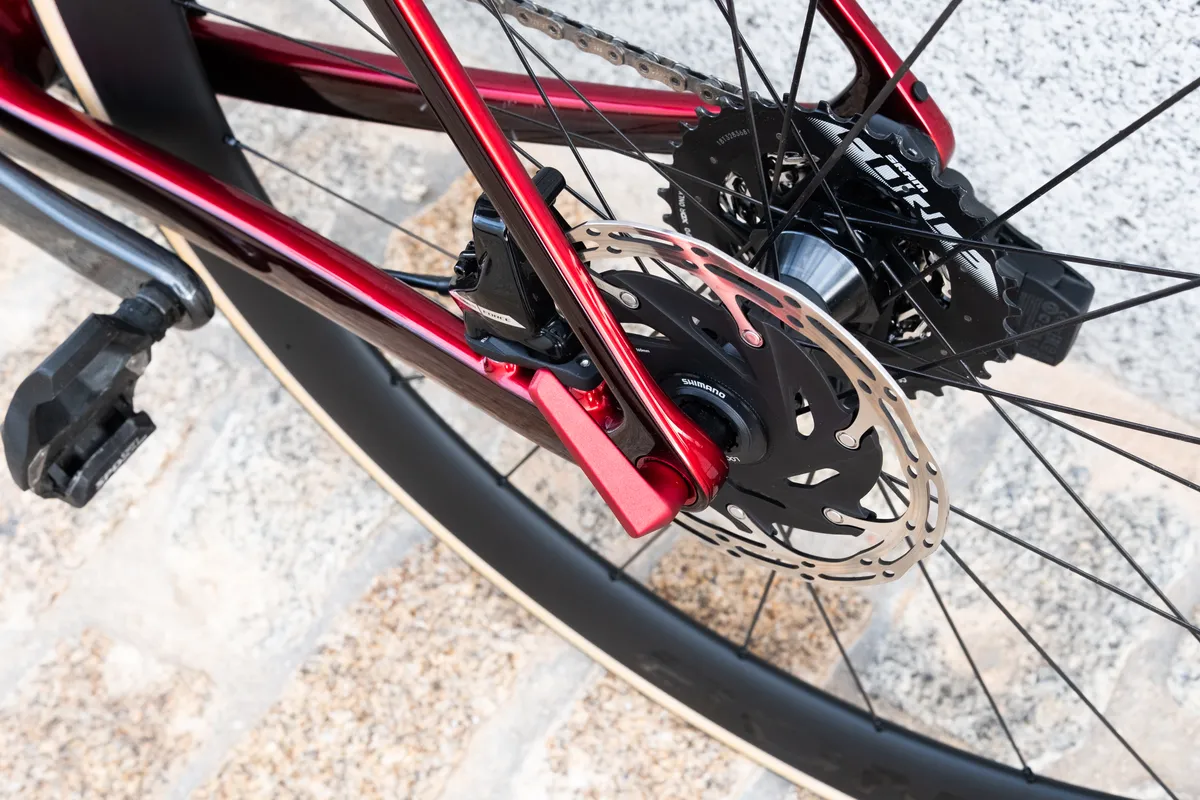
Trek has introduced a new universal headset spacer and shared top cover system to the new Madone lineup and “future Trek road bikes.” The exact setup you choose depends on your stem or one-piece cockpit:
- RCS Race: RSL Aero Handlebar/Stem (included with Madone SLR Gen 8)
- RCS Pro: RCS Pro Blendr Stem (included with Madone SL Gen 8)
- RCS Universal: traditional round stems
The new Madone is also built around SRAM’s UDH system, opening up compatibility to what appears to be a UDH-specific 1x version of the brand’s high-end road bike groupset.
Finally, there are no changes to the T47 bottom bracket, used on several generations of Trek road bikes.
The Trek Madone SL 2025 range in brief
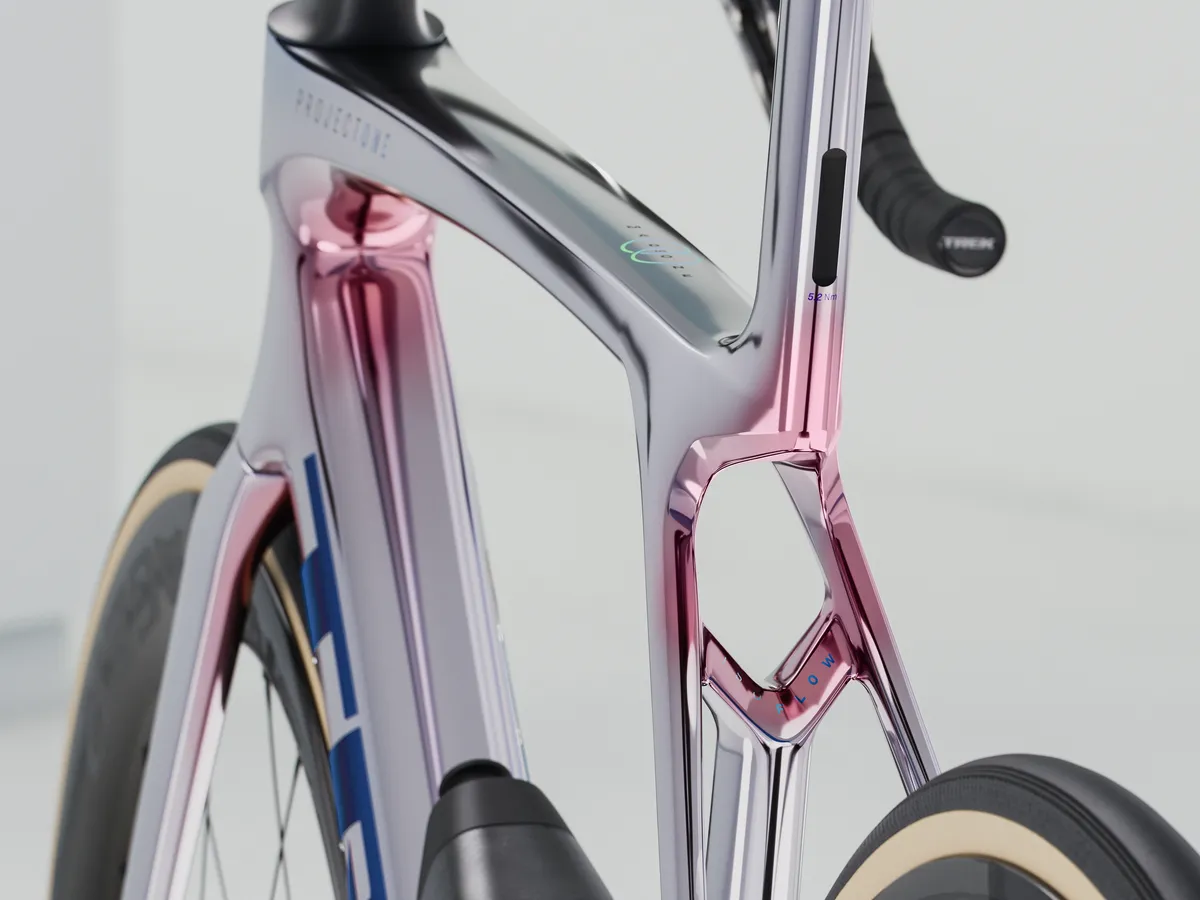
The SLR and SL ranges consist of four bikes each, with frames available at both levels.
Prices start at £4,250 / $3,499.99 / €3,499 / AU$4,499.99 for the Madone SL 5 equipped with a 105 12-speed mechanical, and rise to £13,999 / 13,499 $.99 / €16,399 / AU$19,999.99 for the SRAM Red-AXS-equipped Madone SLR 9 AXS.
The SL and SLR bikes are available through Trek’s Project One customization program.
Those with pockets the size of a solar system can opt for the Project One bike with ‘Interstellar’ finish at £14,700 / $16,999.99 / €16,399 / AU$ N/A.
All bikes come with 28mm wide tires and clearance for 32mm tires.
undefinedundefinedundefinedundefined